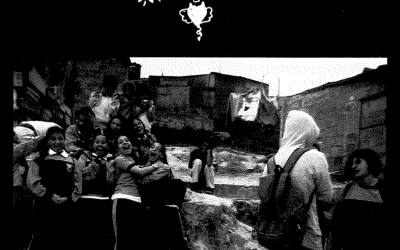Guest Introduction: Colombia
A Hundred Years of Change
The statistics are clear. In the first decade of the 20th century, only 12 percent of Colombia’s four million people lived in cities with more than 10,000 inhabitants. Only 25 percent of the population could read and write; only one out of six children attended school. Likewise, typhoid, measles and gastrointestinal ailments killed one out of every six infants before they reached their first birthday.
Women, at least in theory, stayed home. They had no political rights and, according to law, had to submit themselves to their husband’s authority. In practice, many had small businesses, made handicrafts or planted the earth. The closest thing to professional women were teachers in rural schools and nuns working in orphanages and asylums.
In a hundred years, many things have been transformed. The 20th century was one of accelerated change. What were the most important changes? Economic transformation, the coffee boom that opened us up to the world or the development of a national industry or urbanization with mass exodus of peasants to the cities—making Colombia into an urban nation? Was it general schooling enabling all children to attend primary school, with one out of every four Colombians now entering the university? Was the biggest change the eradication of epidemics? Or was it the development of the mass media, replacing the word of the priest or the teacher with newspapers, radio and television that brought us rancheras and rock, newscasts and evangelical preaching?
In my opinion, the fundamental change has been in relations between men and women. Already, in the 1920s, girls were going to primary school at the same rate as boys. Women were filling lowly positions in factories and stores. By the1940s, young women were getting their doctorates. Today men and women hold roughly the same number of midlevel positions in business and institutions and in some high political posts. This generation, the first one with more women than men graduating from the university, will almost certainly achieve equality in the workforce. The inertia of machismo and the burdens associated with pregnancy and maternity still linger on. But even peasant women have managed to liberate themselves somewhat from their machos—something that seemed impossible fifty years ago.
Obviously, some things have not changed, at least in relative terms. Colombia is a more egalitarian society today. However, although today’s poor have access to medical service and their children go to school, they may actually receive a smaller proportion of income than in the beginning of the 20th century. Despite highly increased individual productivity, the proportion of product that goes to each economic strata is similar to that of a hundred years ago.
And one thing has changed for worse. A hundred years ago, the end of a bloody war brought a 40-year period of peace. If we had the same homicide rates as in the 1920s or ’30s, Colombia would not have 30,000 dead per year, but barely 2,000. Colombian society substantially improved its quality of life with talented bureaucrats performing despite unfavorable political conditions. However, the Colombian State and ruling class let themselves get tangled up with the demon of violence at least since 1947/1948 and never found the way to confront this violence effectively. At times, they even fomented it by promoting intransigent, sectarian political models. Sometimes intellectual discourse also stimulated violence by proclaiming armed struggle as the only solution to problems of inequity. It is quite likely that the country is still paying for its inability to carry out agrarian reform in the 1950s and 1960s.
With the idea of changing an unjust country, the guerrillas declared war fifty years ago. The violence of this war—and the demonic responses it has generated—has made the country more unjust, poorer and more rigid, but much has still been transformed. If peace should be declared today, more open political institutions and the emerging richer and more democratic civil society culture would enable Colombians to finally come closer to achieving the type of country we all desire.
Related Articles
Editor’s Letter
This is a celebratory issue of ReVista. Throughout Latin America, LGBTQ+ anti-discrimination laws have been passed or strengthened.
Editor’s Letter: Colombia
When I first started working on this ReVista issue on Colombia, I thought of dedicating it to the memory of someone who had died. Murdered newspaper editor Guillermo Cano had been my entrée into Colombia when I won an Inter American…
Photoessay: Shooting for Peace
Photoessay: Shooting for PeacePhotographs By The Children of The Shooting For Peace Project As this special issue of Revista highlights, Colombia’s degenerating predicament is a complex one, which needs to be looked at from new perspectives. Disparando Cámaras para la...



